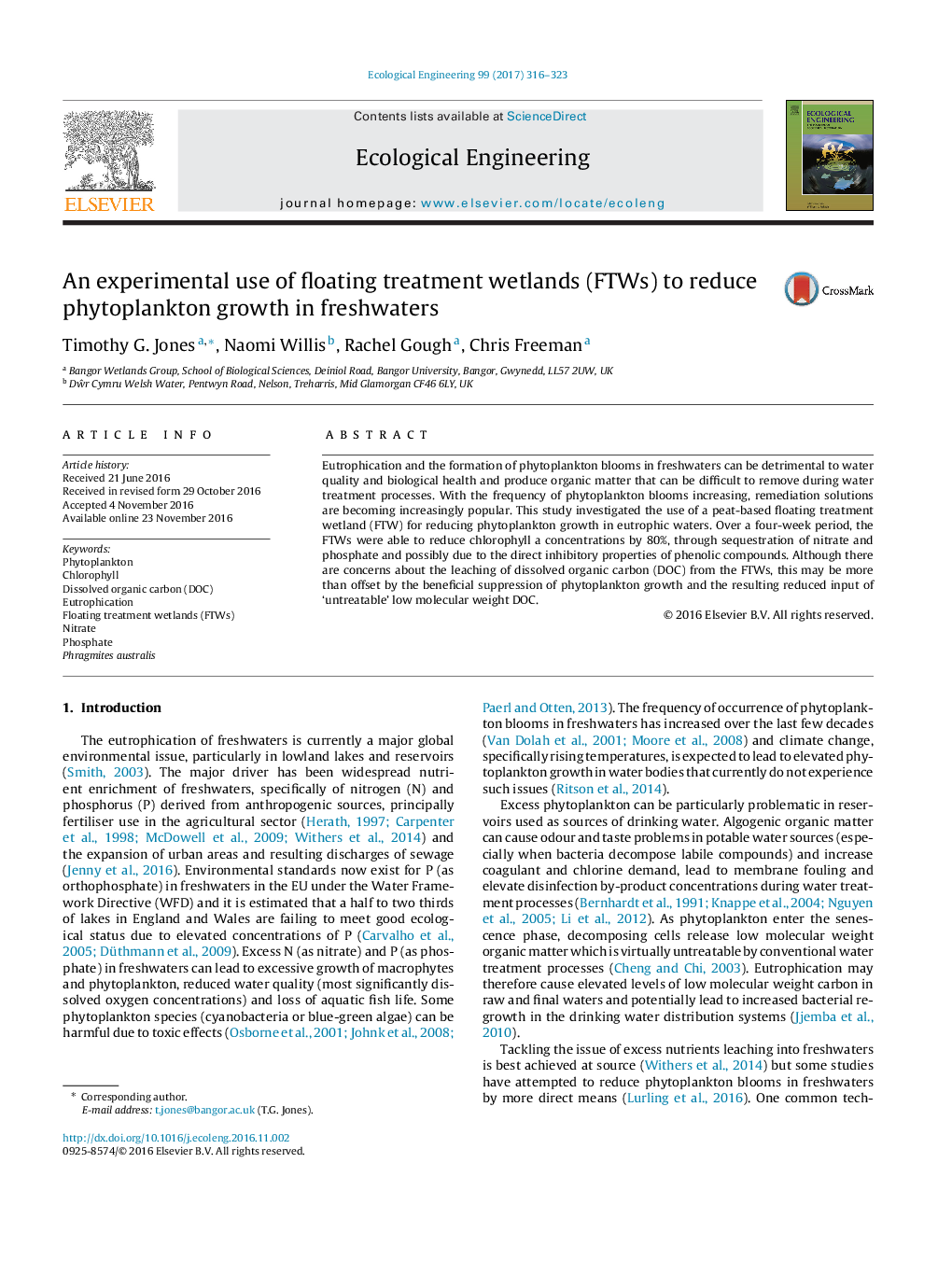| Article ID | Journal | Published Year | Pages | File Type |
|---|---|---|---|---|
| 5743999 | Ecological Engineering | 2017 | 8 Pages |
Eutrophication and the formation of phytoplankton blooms in freshwaters can be detrimental to water quality and biological health and produce organic matter that can be difficult to remove during water treatment processes. With the frequency of phytoplankton blooms increasing, remediation solutions are becoming increasingly popular. This study investigated the use of a peat-based floating treatment wetland (FTW) for reducing phytoplankton growth in eutrophic waters. Over a four-week period, the FTWs were able to reduce chlorophyll a concentrations by 80%, through sequestration of nitrate and phosphate and possibly due to the direct inhibitory properties of phenolic compounds. Although there are concerns about the leaching of dissolved organic carbon (DOC) from the FTWs, this may be more than offset by the beneficial suppression of phytoplankton growth and the resulting reduced input of 'untreatable' low molecular weight DOC.
